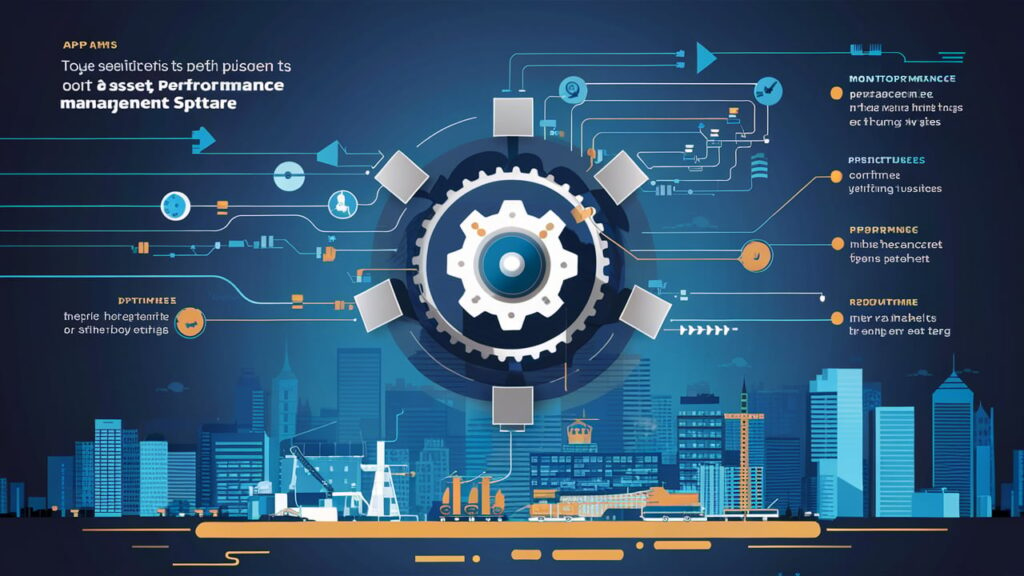Optimizing operations in today’s competitive business environment is essential to stay ahead. Advanced technologies like asset performance management software are crucial in this optimization. By leveraging asset performance management software, businesses can maximize the efficiency and reliability of their systems, thereby enhancing their overall productivity and profitability.
This type of software uses artificial intelligence (AI) to predict potential failures, allowing for proactive maintenance that minimizes downtime and reduces costs. By integrating AI, businesses can make data-driven decisions that enhance productivity and operational safety. Foreseeing equipment issues before they become critical can save significant money and prevent operational halts, thus maintaining a steady workflow.
The Role of Predictive Maintenance
Predictive maintenance involves using AI to monitor equipment condition and predict when maintenance should be performed. This significantly shifts from traditional maintenance strategies, often based on fixed schedules or reactive responses to equipment failures. Predictive maintenance provides a more efficient and cost-effective approach to asset management.
Implementing predictive maintenance through AI has several key advantages:
- It reduces unplanned downtime by predicting failures before they occur. This predictive capability ensures that maintenance activities are scheduled at the optimal times, thus avoiding disruptions to business operations.
- Addressing issues early increases the lifespan of assets. Early detection of potential problems means that minor repairs can be made before they turn into major, costlier issues, thereby extending the useful life of equipment.
- It optimizes maintenance schedules, reducing unnecessary labor and material costs. Businesses can allocate resources more effectively and avoid waste by focusing on actual wear and tear rather than using a one-size-fits-all approach.
According to a study on AI benefits, companies implementing predictive maintenance can see a reduced downtime of up to 50% and an increase in equipment lifespan of 20-25%. These figures underscore the transformative potential of predictive maintenance, which can lead to significant cost savings and improved operational efficiency.
Enhancing Safety with AI Solutions
AI is also essential for enhancing worker safety. By continuously monitoring environmental factors and equipment, artificial intelligence can identify risks and notify operators instantly. This proactive strategy guarantees a safer working environment for staff members and helps prevent accidents.
Construction, manufacturing, and the oil and gas sectors have already witnessed significant increases in safety due to AI technology. AI recognizes, for example, when machinery operates above typical parameters, suggesting a possible risk to safety. AI technologies enable operators to take corrective action before harm happens using early alerts.
Data-driven safety insights show that integrating predictive analytics with real-time monitoring can greatly lower risk exposure and improve safety procedures. By reducing injuries and raising morale, AI monitoring systems’ constant feedback loop guarantees that safety always comes first.
Data-Driven Decision Making
Effective decision-making is essential for running a successful business. Software for asset performance management with AI capabilities offers data insights that support precise decision-making. Artificial Intelligence (AI) can detect patterns, forecast results, and provide practical suggestions to enhance operational effectiveness by examining both past and current data.
By using a data-driven approach, it is ensured that decisions about operations and maintenance are grounded in reliable facts rather than conjecture. AI, for instance, may determine which parts are most likely to break and recommend focused maintenance, which lowers expenses and downtime. This enables companies to concentrate their maintenance efforts on the areas that require the greatest attention.
Implementing such data-driven strategies can significantly improve efficiency and cost savings. Companies adopting these methods have reported a 20-30% reduction in maintenance costs. This approach minimizes the chance of unexpected failures and optimizes resource utilization, making operations smoother and more predictable.
Challenges in Implementing AI Solutions
While AI’s benefits are clear, businesses face several challenges when implementing these solutions. Common obstacles include:
- High initial investment costs can be a barrier for smaller companies. Implementing AI systems often requires significant upfront capital, which may not be readily available for all businesses.
- Integration issues exist with legacy systems, which may not be compatible with new AI technologies. Older systems may require substantial upgrades or replacements to work effectively with AI solutions.
- A shortage of skilled professionals trained in AI and data analytics necessitates additional training and development. Successful implementation of AI systems requires employees adept at handling advanced technologies, which may necessitate investment in training and recruitment.
Despite these challenges, businesses can overcome them through strategic planning and adopting best practices. Partnering with experts and investing in employee training can facilitate a smoother transition to AI-powered systems. Additionally, businesses can start with pilot projects to test and refine their AI strategies before full-scale implementation.
These pilot projects provide valuable insights and allow businesses to understand the practical implications of AI within their specific operational contexts. By taking a phased approach, companies can manage costs, address technical issues incrementally, and gradually build the necessary skills within their workforce.
Future Trends in Asset Performance Management
The future of asset performance management lies in the continuous advancements in AI technology. Emerging trends include using machine learning for more accurate and adaptive predictions. Machine learning algorithms can learn from new data and dynamically adjust maintenance schedules and operational strategies.
Another trend is the integration of AI with the Internet of Things (IoT), enhancing data collection and analysis capabilities. IoT devices can provide real-time data from various assets, giving AI systems a more comprehensive understanding of their condition and performance. This integration allows for more accurate predictions and more effective maintenance strategies.
These developments portend an era in which companies can attain previously unheard-of levels of dependability and efficiency. AI technology will surely get more and more integrated into corporate processes as it develops, spurring additional advancements and enhancements in asset management. Improved prediction skills will lead to more profitable and sustainable company models as well as increased operational efficiency.
Conclusion
In conclusion, AI-powered asset performance management software offers significant benefits for optimizing business operations. From predictive maintenance to enhanced safety and data-driven decision-making, AI technologies transform how businesses manage their assets. Despite some implementation challenges, the potential rewards make it a worthwhile investment. Effective planning and phased implementation can mitigate the initial hurdles, making AI an accessible and powerful tool for businesses of all sizes.
As AI technology continues to advance, its role in business operations is set to expand, offering even greater improvements in reliability, efficiency, and cost savings. The future of asset management looks promising, with AI at the forefront of innovation, driving smarter, more efficient, and more profitable business practices.









